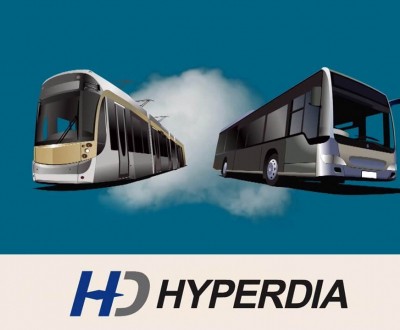Hyperdia, the Japanese railway system reference
Hours and prices: planning your journeys by Shinkansen (Japan Railways)
Hyperdia is a Japanese website allowing to precisely compare hours and possible paths by trains or planes ✈️ in Japan, depending on numerous criteria: price, duration, with or without changeovers, etc. Accessible in Japanese and English versions, it is a reference for all travelers in Japan.
If you go for a trip in Japan, we can easily bet that you will use the train at any given moment. We have already talked about how the service quality, punctuality and comfort of Shinkansen, and other Japanese trains 🚅, easily beat those of the Western world.
The railway network is very dense between and inside each of the different regions of Japan, which makes it the most effective and popular mean of transportation. This also explains why it is unavoidable to use a Japan Rail Pass, offering free transportation on all trains (and some other transportation systems) of the public company JR.
Hyperdia clearly explains all the transfers, costs and give precise guidelines to find the best option for traveling. Note that it is not only for the Shinkansen rides between two cities, as it is also possible to calculate your transportation between two subway 🚇 stations in Tokyo, for example.
However, it is sadly not possible to command nor buy your train tickets on the website.
Lately, Hyperdia also offers to check airplanes journeys, but it is for sure the train part which is the most interesting for tourists in Japan. For more information, Hyperdia application is available for iPhone and Android smartphones 📱, with a free usage during the first 30 days.
Hyperdia in competition with Google Maps?
When we think about transportation in Japan, Hyperdia is a systematic answer. And for a reason: precise and complete, even if not very ergonomic (webdesign is still not Japan's main strength), the website and its application are very useful to plan rides in trains, buses or subways when planning to go to Japan. In the same sort of website, we can think about Jorudan which does a more synthetic work but even less glamorous.
On the other side of the Pacific ocean, since May 2013, Google launched a progressive wave of updates for its Maps application, especially on the web version (for office computers). By recently testing the beta version, we realized how easy it was to prepare our rides on the Japanese archipelago. These updates recently became accessible for all.
Some remain reluctant about using Google and its superpowers, however all can admit that for a strictly practical point of view, Maps did a huge step forward and for what it takes during a trip in Japan, it does an excellent assistant job.
To fully use GMaps' potential, first choose your itinerary. In the white information case on the top left corner, click on the "Transit" icon and then on "schedule explorer" in the bottom. You will then reach a detailed page presenting all information depending on your preferences.
Do not forget to add the "station" word if you want to travel from or to a train station.
Comparing Google Maps and Hyperdia
To make a comparison, several itineraries have been used among the most common ones in train, with Google maps on the left and Hyperdia on the right.
Overall, Google Maps happens to clearly be more visual, more pleasant and faster to use, especially to effectively navigate between the several possibilities of transportation. The timeline is ideal to compare the different hours and duration of rides, as well as the map which allows to have an immediate and useful view of the used paths thanks to the color code. For short trips, the choice of walking or biking is also very useful.
However, it does not allow to remove the Nozomi Shinkansen for the JR Pass owners, nor to separate in one click the JR lines from the private companies (even if the JR logo is immediately readable). Moreover, the choice of planes as transportation redirects to classical Google results. Also note that for trains, its capacity of planning is limited to two months in advance, where Hyperdia sometimes lets have the information up to 8 months in advance. Finally, for those not mastering Musashi’s language, Google Maps sometimes leaves some words in Japanese.
While Hyperdia remains very effective, it is not surprising to think about Google Maps as an interesting complement, or even as a serious alternative if the service keeps on getting better. To be closely monitored!

